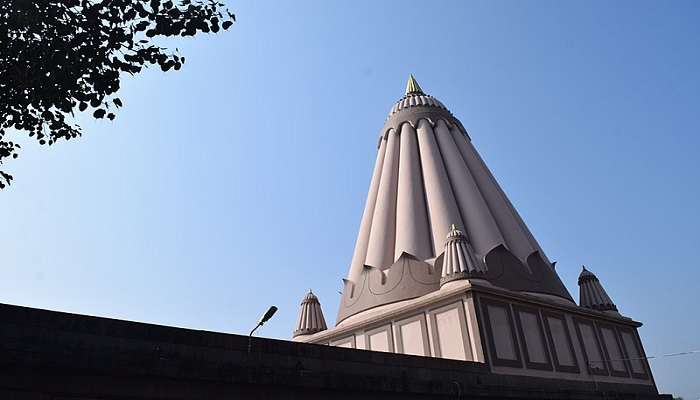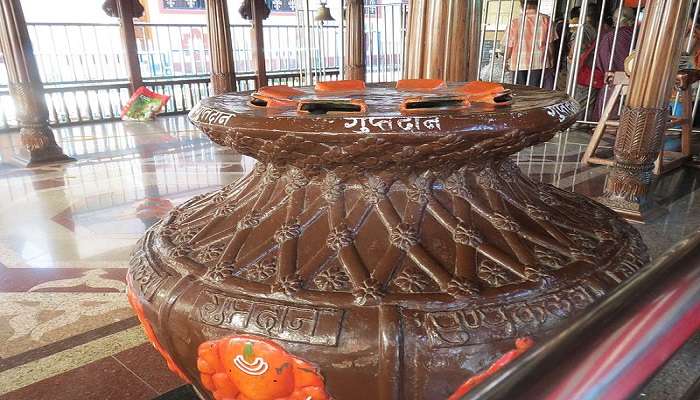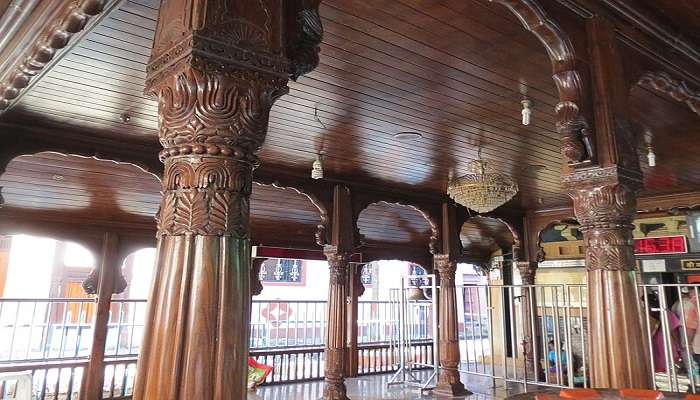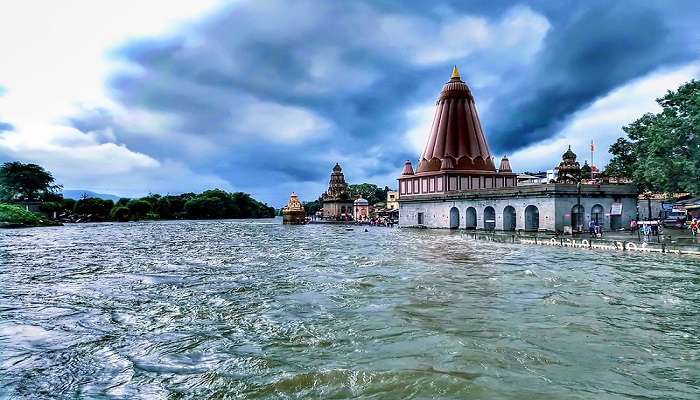Visit The Gokarna Ganesha Temple To Seek Blessings From Lord Ganpati In 2026

In the quaint coastal town of Gokarna, nestled along the Arabian Sea, stands the magnificent Maha Ganpati Temple, a revered sanctuary dedicated to Lord Ganesha. This ancient marvel has drawn devotees for centuries with its imposing gopuram and intricate carvings. As you step inside, the air is filled with the fragrance of incense and melodious chants, transporting you to tranquillity. The temple’s centrepiece, the idol of the beloved deity, radiates benevolence. Whether seeking blessings or cultural immersion, the Gokarna Ganesha Temple promises an experience that will leave an indelible mark on your soul.
Gokarna Ganesha Temple: An Overview

The Gokarna Ganesha temple is a significant Hindu pilgrimage site in the serene town of Gokarna, Karnataka. This temple, dedicated to Lord Ganesha, is renowned for its spiritual significance and peaceful atmosphere. Devotees often pray at the Maha Ganapati Temple before proceeding to the Mahabaleshwara Temple. One of the unique aspects of this temple is the hole on the head of Lord Ganesha’s statue. This feature is associated with a fascinating tale from Hindu mythology. Ravana, after performing penance to Lord Shiva, was believed to be gifted a Shiv Lingam. However, the Lingam could only be placed on the earth once, and that place would become its permanent abode.
The gods, fearing Ravana’s power, created an illusion of sunset, prompting Ravana to hand over the Lingam to a young boy (Lord Ganesha in disguise) while he performed his evening rituals. The Gokarna Ganesha Temple allows visitors to explore the religious significance, architectural beauty, and peaceful atmosphere, making it a must-visit for pilgrims and travellers alike.
Also Read: Restaurants In Gokarna
Legend Behind The Gokarna Ganesha Temple

In Hindu mythology, there’s a tale of Ravana’s journey back to Lanka from Mount Kailash, where he performed an arduous penance for Lord Shiva. As a reward for his devotion, Shiva gifted him a sacred Shiv Lingam with a peculiar condition: it could only be placed on the Earth once, and wherever it touched down would become its permanent abode. However, the other gods were apprehensive about Ravana taking the Lingam to Lanka, fearing he might misuse its power. So, they sought Lord Ganesha’s help and devised a plan to thwart Ravana’s intentions. Taking the guise of a young boy, Lord Ganesha descended to Earth. Knowing Ravana’s strict adherence to rituals, the other gods conjured an illusion of a sunset. Upon seeing the false dusk, Ravana hastened to complete his evening prayers.
Seizing the opportunity, the disguised Lord Ganesha offered to hold the Lingam temporarily. He would call Ravana thrice and then place it on the ground. Though puzzled, Ravana agreed, compelled by circumstances. Lord Ganesha called out to him three times as Ravana performed his rituals. But absorbed in his prayers, Ravana requested more time each instance. Before Ravana could retrieve the Lingam, Lord Ganesha, now in his proper form, swiftly placed it on the Earth. Enraged by the trickery, Ravana hurled a stone at the departing figure, unknowingly targeting Lord Ganesha’s head. At that moment, Ravana realised his folly’s divine deception and gravity. The spot where the Shiv Lingam rested became the site of the Mahabaleshwara temple, a testament to the intricate interplay of devotion and divine intervention in Hindu mythology. Since Lord Ganpati played a crucial role, the Gokarna Ganesha Temple was made. The idol of Lord Ganpati is assumed to be 1500 years old and has a hole on the top that symbolises the stone Ravana threw at him. Today, the temple majestically overlooks the sea, attracting pilgrims and tourists alike. It is integral to Gokarna’s spiritual legacy.
Architecture Of The Temple

The Gokarna Ganesha Temple in Gokarna’s architecture is captivating, featuring impressive structures that will leave you spellbound. As you approach the temple along the road, vendors selling flowers and incense sticks create a vibrant atmosphere. Upon entering, you’ll notice distinct queues of devotees waiting to pay their respects to Lord Ganesha.
Inside, the temple hall resonates with the musical sound of numerous bells, creating a serene ambience. The idol of Lord Ganesha, though small in size, commands reverence, with a notable hole on its head. Devotees are guided to perform a circumambulation (parikrama) around the idol, following which the priest offers Prasadam. The temple offers a profound spiritual experience. Prayers and contemplation typically last 15 to 30 minutes before exiting.
Related Post: Gokarna Beach Resort
How To Reach

To reach the Gokarna Ganesha Temple, there are several ways, including:
By Flight: To reach the temple by flight, book a ticket to the Dabolim Airport in Goa, approximately 155 km away. From the airport, one can hire a taxi, which takes around three hours.
By Train: The closest train station, Gokarna Road, is roughly 10 km from the temple. From the station, you can rent an autorickshaw or a cab.
By Bus: The closest bus stand is the Gokarna Main Bus Stand, about 5 Km from the temple. From here, you can either take a local auto-rickshaw or book a private cab from one of the top car rental companies in Gokarna to visit the temple and explore other tourist attractions.
You May Also Like To Read: Things To Do In Gokarna
The Gokarna Ganesha Temple in Gokarna is a true gem, a testament to India’s rich cultural heritage and spiritual essence. Its ancient architecture, elaborate carvings, and serene atmosphere create a profound peace and devotion. Whether you’re a devout Hindu or appreciate the beauty of sacred spaces, this temple is a must-visit destination. Are you ready to immerse yourself in Gokarna’s divine serenity and experience the magnificence of the Gokarna Ganesha Temple? Then why wait? Book your trip to Gokarna today and embark on a journey that will rejuvenate your soul and leave you with cherished memories for a lifetime.
For our editorial codes of conduct and copyright disclaimer, please click here.
Cover Image credit: By सुबोध कुलकर्णी for Wikimedia Commons.
Frequently Asked Questions About Gokarna Ganesha Temple
Which food is Gokarna famous for?
Gokarna is famous for its seafood, and vegan Konkani delicacies like Patrode (stuffed Colocasia leaves) and Todadevu (similar to Dosa). You should also try the Karadantu, a local dessert made with roasted dry fruits and jaggery.
Who is the main god of Gokarna?
Gokarna is primarily dedicated to Lord Shiva, who is revered as Mahabaleshwar. The Mahabaleshwar Temple, a Hindu temple dating back to the 4th century CE, is one of the most frequented temples in the town. The temple is home to the Atmalinga or Shiva Linga, which some believe to be the earliest Shiva lingam. The temple is recognised as one of the seven sacred Muktikshetras or Muktistala (“places of salvation”) in Karnataka.
What is the dress code for Maha Ganpati temple Gokarna?
While there isn’t a strict dress code, it’s advisable to dress modestly when visiting any temple. Wearing traditional Indian attire is respectful and appropriate. Avoid sleeveless tops, shorts, and revealing clothing. It’s also customary to remove footwear before entering the temple premises.
What is Gokarna famous for?
Gokarna is renowned for its spiritual significance, pristine beaches, and natural beauty. Besides it is home to Maha Ganapati Temple, Mahabaleshwar Temple, the serene Om Beach, and Kudle Beach.
Is jeans allowed in Gokarna?
While jeans aren’t specifically banned, it’s best to opt for more traditional attire when visiting temples. Jeans are generally acceptable for casual outings in Gokarna, but consider wearing something more culturally appropriate during temple visits.
People Also Read:
Mangaladevi Temple Chamundeshwari Temple Sri Venkateswara Swamy Vaari Temple

Passionate Marketing Student with a flair for storytelling, eagerly embarking on a journey within the vibrant world of travel. Excited to merge analytical acumen with creative skills to elevate the editorial landscape of the travel industry.











